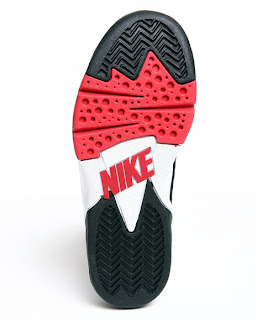Wednesday, March 10, 2021
Friday, February 28, 2020
Monday, January 23, 2017
Highsnobiety Creative Director Edward Chiu Picks His Top 10 Sneakers of 2016
Posted on 6:25 AM by michi
5. Kim Jones x NikeLab Air Zoom LWP
4. adidas ACE 16+ Purecontrol Ultra Boost
3. Rick Owens x adidas Mastodon
2. Riccardo Tisci x NikeLab Air Zoom Legend
1. ACRONYM x NikeLab Air Presto Mid
Tuesday, November 10, 2015
How Nike's 'Back To The Future' Sneakers Work
Posted on 11:23 AM by michi
How it works
The mechanism behind Nike’s ‘power laces’ was described inUS patent 8769844, published 8 July 2014. Basically, each shoe contains a motorized system where the laces and straps are tightened by winding them around spools. The automatic lacing system consists of two separate parts around the foot and ankle.
Nike Mag automatic lacing systems
In the lower part, the self-lacing system (annotated ’122′ in figure 13 of the patent application) has a strap moving mechanism (1202) located in a cavity (1287) within the sole of the shoe. It’s powered by a small motor (1230) that rotates a driveshaft (1232) with two gears (1240 and 1242). The gears transfer power to two belts (1250 and 1252) attached to the laces (111 to 114).
The ankle cinching (belt) system in the shoe’s upper part (’124′ in fig. 22) uses a different mechanism (2222) and would lie behind your achilles tendon. It uses a coil spring (2204) wrapped around a shaft (2232) that ultimately pulls on the ankle strap (150). The belt stays tight thanks to a locking mechanism (2299), which is disengaged by the shoe’s control system.
Nike Mag automatic lacing systems
The two strap moving mechanisms are automatically triggered after your body mass is detected by a weight sensor in the heel (’1606′ in fig. 17). Both are connected to the shoe’s central control system (1650). For adjustments, there are manual controls (’1004′ in fig. 10): press a green button to tighten the straps, red to loosen them.
Although the ‘power laces’ in the lower part of the trainers might gain the most attention, it’s actually the belt around the ankle that could prove really useful.
2015 Nike Mag
As Nike CEO Mark Parker hints in the press release, “We started creating something for fiction and we turned it into fact, inventing a new technology that will benefit all athletes.”
Advantages for athletes
The automatic lacing system could in principle be used in any shoe, but including it in a high-top sneaker – what the patent calls the ‘preferred embodiment’ – could be useful for people who play sports and are prone to roll or twist their ankles, such as tennis star Andy Murray, who wears ankle braces. Nike’s ankle cinching system could help protect sprains and prevent injury.
The 2015 Nike Mag isn’t available to buy in the shops, but will be sold via auction next year, with all proceeds going to the Michael J Fox Foundation for Parkinson’s Research. Within a few years, however, everyone will be able to wear sneakers with power laces.
source: http://www.forbes.com/
Monday, September 23, 2013
Sunday, September 22, 2013
Friday, September 20, 2013
OWEN "DESERT" SUPRA
Posted on 4:03 AM by michi
The Owen is the first lightweight shoe from SUPRA. Durable, looped webbing and lightweight rope laces make for quick and easy cinching and provide a snug fit. The shoe features a comfortable, ultra light, SUPRAFOAM sole. The rubber pods on the contact areas offer traction and even distribution of impact across the sole.
Thursday, September 19, 2013
NIKE SNEAKERBOOT /autumn winter
Posted on 3:56 AM by michi
Nike Air Force 1 Duckboot, Nike Air Max 90 SneakerBoot, Nike Free Run 2 SneakerBoot, Nike Lunar LDV SneakerBoot, Nike Roshe Run SneakerBoot, Nike Roshe Run Hi SneakerBoot
Subscribe to:
Comments (Atom)





































































